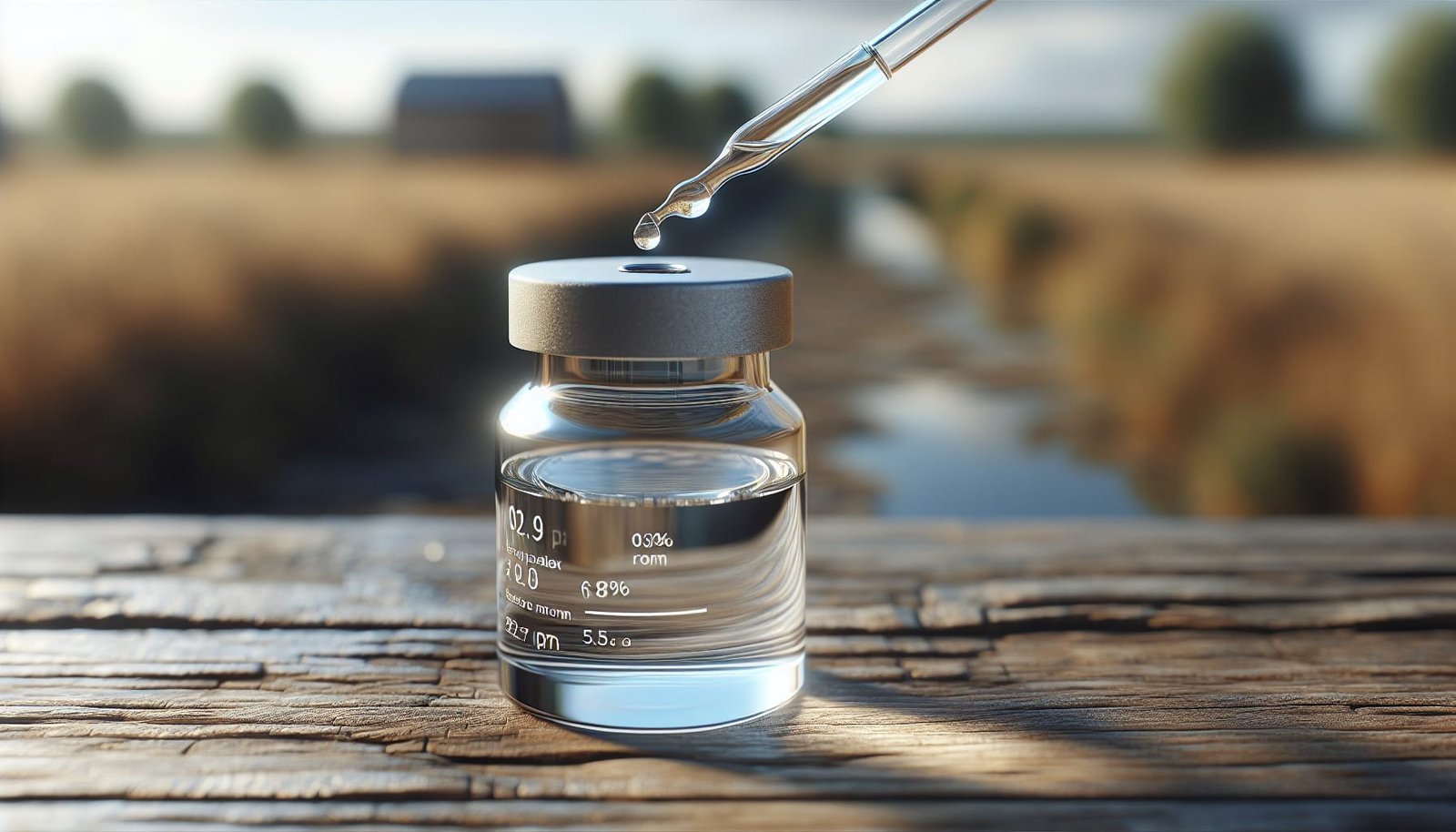? Are you worried that your well water might contain lead and unsure how to check it?

How Do I Test For Lead In My Well Water?
You can test your well water for lead using several methods, and knowing which one is right for you will make the process simpler and more reliable. This article walks you through why testing matters, how to collect accurate samples, how to interpret results, and what to do if lead is present in your well water.
Why testing for lead in well water matters
Lead is a toxic metal that can affect nearly every system in your body, especially the nervous system, and children and pregnant people are at greatest risk. Testing your well water confirms whether lead is present so you can take action to protect your household and make informed decisions about treatment or plumbing changes.
Where lead in well water comes from
Lead in well water rarely originates from the groundwater itself; it most often comes from plumbing materials, solder, fixtures, or components in the distribution system that contain lead. Corrosion of pipes and fittings, changes in water chemistry, or disturbances to plumbing can release lead into the water you use for drinking and cooking.
Who should test and when
You should test if your home was built before 1986, if you have older plumbing or brass fixtures, if you install a new well pump or change plumbing materials, or if someone in your household has health conditions that increase sensitivity to lead. You should also test if your tap water looks, smells, or tastes unusual, or after any plumbing work or water treatment changes.
Types of lead tests available
There are several ways to test for lead, each with different accuracy, cost, and convenience. Choosing the right test depends on how accurate you need the result to be and whether you want a quick screen or a certified laboratory analysis.
Do-it-yourself test kits
DIY kits are available through retailers and online and typically use test strips or vials that change color when lead is detected. These kits are convenient and provide a quick indication, but they vary in accuracy and sensitivity, so they are best used as an initial screen rather than definitive proof.
Certified laboratory testing
Certified laboratories provide the most accurate and legally recognized results; they use methods such as atomic absorption spectroscopy or inductively coupled plasma mass spectrometry (ICP-MS). If you need reliable results for health decisions, property transactions, or regulatory compliance, a state-certified lab is the recommended choice.
Portable electronic meters and field tests
Portable field instruments can be used by trained professionals for immediate, on-site estimates of lead concentrations. These meters are faster than lab turnaround, but accuracy depends on instrument calibration and operator skill, so results are often confirmed by a laboratory for important decisions.
| Test type | Typical cost | Accuracy | Turnaround time | Best use |
|---|---|---|---|---|
| DIY kits | $10–$50 | Low to moderate | Minutes to hours | Quick screening |
| Portable meters | $100–$1,000+ (professional use) | Moderate | Immediate | Field screening by professionals |
| Certified lab | $25–$200 per sample | High | Days to a week | Definitive testing and documentation |
How to prepare for testing
Preparation improves the reliability of your results and helps you understand where lead might be entering your water. Planning also ensures you collect the right type of sample for the question you want answered.
Identify plumbing and water usage patterns
Find out which faucets, fixtures, or plumbing materials are older or contain brass or leaded solder, and note where water is used most for drinking or cooking. Knowing this helps you decide which outlets to sample and whether to test for first-draw or flushed water.
Timing of sampling: first-draw vs flushed
A first-draw sample captures water that has been sitting in the pipes for several hours and is most likely to contain lead from plumbing. A flushed sample shows the lead level after water has run for a set time and can indicate whether the source is the service line or the internal plumbing.
Safety and supplies you’ll need
Gather clean sample bottles (provided by labs or purchased kits), clean towels, and a marker for labeling. Follow any instructions from the testing lab or kit carefully to avoid contamination and to ensure valid results.
Step-by-step sample collection for accurate results
Collecting samples correctly is essential to get meaningful results that you can act on. The following steps are general and you should always follow specific instructions provided by the lab or kit you use.
Collecting a first-draw (stagnant) sample
First-draw samples are typically taken first thing in the morning after water has not been used for at least six hours. Turn on the cold-water tap and collect the very first water to flow from the faucet into the sample bottle without running the water first, following any volume or bottle handling instructions from the lab.
Collecting a flushed sample
To collect a flushed sample, run the cold water for a recommended time—often five minutes—before collecting the sample. This helps you assess lead levels from the well or service line rather than from immediate household plumbing.
Sample storage and shipping
Keep samples cool and transport them to the lab promptly, following any provided chain-of-custody or refrigeration instructions. Many labs provide pre-labeled bottles and shipping instructions, so use those and note the date and time of sampling.

How to interpret test results
Interpreting results requires understanding the units reported and the action levels used by public health authorities. Your response will depend on whether the result is a non-detect, low level, or exceeds advisory levels.
Understanding units and action levels
Lead is commonly reported in micrograms per liter (µg/L), which is equivalent to parts per billion (ppb). The U.S. Environmental Protection Agency (EPA) does not have a federal maximum contaminant level (MCL) for private wells, but the EPA and many health authorities use 15 µg/L (15 ppb) as the action level for public water systems, and the agency emphasizes minimizing lead exposure even at lower concentrations.
What different result ranges mean
A non-detect result indicates no lead was measured at or above the detection limit and suggests low risk, but testing frequency still matters. Results between a detectable low level and 15 µg/L mean some lead is present and you may wish to reduce exposure, while results above 15 µg/L are a strong signal to take prompt action to reduce or eliminate exposure.
| Result range (µg/L or ppb) | Interpretation | Recommended action |
|---|---|---|
| Non-detect | No lead detected at lab detection limit | Continue periodic testing and maintain safe practices |
| >0 to <15< />d> | Low levels detected | Reduce exposure (filters, flushing), retest, consider plumbing fixes |
| ≥15 | Meets public water system action level | Take immediate steps to reduce exposure and seek long-term remediation |
If your test detects lead: immediate actions
If lead is detected, taking immediate and practical steps will reduce your household’s exposure while you plan longer-term solutions. You should focus first on reducing direct consumption and protecting the most vulnerable people.
Short-term measures to reduce exposure
Use an alternative drinking source such as bottled water or water from a safe, tested faucet until you can install effective treatment or replace leaded components. Use cold water only for cooking and drinking, since hot water dissolves metals faster, and consider flushing taps by running water for a few minutes before using it for consumption.
Do not boil water (warning)
Boiling water does not remove lead and can actually concentrate it as water evaporates, so do not use boiling as a method to make lead-contaminated water safe. Instead, rely on certified filtration, replacement of lead sources, or alternative water sources.

Long-term solutions for reducing lead in well water
Long-term solutions focus on removing the source of lead or installing treatment that reliably keeps lead out of the water you drink. You should weigh cost, maintenance, and effectiveness when choosing a permanent fix.
Replace lead sources in plumbing and fixtures
Replacing lead pipes, solder, faucets, and fixtures with lead-free materials eliminates the source of lead entering your water. Make sure replacements meet current “lead-free” standards and have fittings that are certified to minimize lead content.
Corrosion control treatments
Corrosion control adjusts water chemistry to reduce the leaching of lead from pipes and fittings and is commonly used by public water systems. Implementing corrosion control for a private well can be complex and often requires professional water testing and treatment design to change pH, alkalinity, or add a corrosion inhibitor.
Filtration systems that remove lead
Point-of-use filters certified to remove lead can provide reliable short- or long-term protection at drinking and cooking taps. Whole-house systems are an option when lead contaminants are widespread in household water, but they are more expensive and require maintenance.
| Filter type | Typical certification | Removes lead? | Maintenance | Best for |
|---|---|---|---|---|
| Point-of-use (under-sink) carbon + certified media | NSF/ANSI 53 for lead reduction | Yes (when certified) | Replace cartridges per manufacturer | Drinking/cooking water at single tap |
| Reverse osmosis (RO) | NSF/ANSI 58 (RO performance) | Yes (highly effective) | Membrane and pre/post filter replacement | High-quality drinking water at single point |
| Whole-house filtration | Depends on media; look for NSF certification | Can reduce lead if designed properly | Higher maintenance and cost | Lead present throughout household water system |
| Faucet-mount pitchers and tap filters | NSF/ANSI 53 certified units available | Yes (if certified) | Frequent filter replacement | Short-term or low-cost option |
Make sure filters are NSF/ANSI certified for lead reduction and are maintained exactly as the manufacturer prescribes. Certification ensures the device has been independently tested for lead removal performance.
Retesting and ongoing monitoring
After treatment or plumbing replacements, you should retest to confirm lead levels are reduced, and continue routine testing to maintain confidence in your water quality. A plan for regular monitoring protects your household over time.
How often to retest
Retest after any remediation work or plumbing changes and again within a few months to confirm stability. If results are low and plumbing remains unchanged, an annual test is a reasonable schedule, and you should test more frequently if you change treatment, have new occupants, or notice changes in water appearance or taste.
Keeping records and when to seek professional help
Keep a file with test dates, results, treatment records, and invoices for replacements or services; this history is useful for troubleshooting and for future homeowners. Seek a licensed plumber or water treatment professional when lead sources are not obvious, when corrosion control is needed, or when you plan major system changes.

Costs, funding, and resources
Testing and remediation costs vary widely, and you may be able to find financial help or local programs to offset some expenses. Knowing typical ranges and where to look for assistance helps you plan a realistic approach.
Typical costs of testing and treatment
DIY kits cost under $50 but provide limited assurance; certified lab tests generally range from $25 to $200 per sample depending on method and turnaround. Treatment costs vary from $50–$300 annually for point-of-use filters to several thousand dollars for whole-house systems or plumbing replacement.
Financial assistance and programs
You may qualify for state or local grants, low-interest loans, or utility programs that assist with private well testing or remediation, and some public health or environmental agencies offer free testing events. Contact your state health department, local county extension, or certified environmental service providers to learn about available assistance.
Frequently asked questions (FAQ)
How soon will I see results from a certified lab?
Turnaround time varies; many labs return results in a few days to a week, while rush services may be faster. Ask the lab for expected timing when you submit the sample so you know when to check results.
Can a filter remove all lead permanently?
No filter removes lead permanently without maintenance; most effective filters require regular replacement of cartridges or membranes to remain effective. Follow the manufacturer’s schedule and verify performance with periodic testing.
Are newer homes guaranteed to be lead-free?
Newer homes are less likely to have lead service lines or leaded solder, but brass fixtures and components can still contain trace amounts of lead. Always test if you have concerns, particularly when you move in or change plumbing.
Will water softeners reduce lead?
Standard water softeners are not designed to remove lead and may sometimes mobilize metals under certain conditions. If you have concerns about lead, use filtration certified for lead removal and consult a professional about system interactions.
If my neighbor has lead in their well, will mine be affected?
Lead occurrence is primarily due to your plumbing and household materials, so your neighbor’s well results do not directly predict your water quality. However, if you share a distribution system or service lines, there could be shared risks; test your own water to be sure.
Can I use bottled water temporarily if lead is detected?
Yes, commercially bottled water is a safe short-term alternative for drinking and cooking if your bottled source is from a regulated supplier. Make sure the bottled water meets regulatory standards and keep it sealed and stored properly.

Final checklist before you test
- Identify which taps you use for drinking and cooking and label them for sampling. Always follow the lab or kit instructions for first-draw vs flushed sampling and record the date and time.
- Gather clean bottles, avoid contaminating samples with dirty hands or surfaces, and transport samples to the lab quickly or ship them according to the lab’s instructions.
- Keep a record of your results, note any plumbing materials or appliance changes, and plan retesting after remediation or annually for ongoing assurance.
Resources and guidance
Use resources from your state health department, local environmental agencies, or national public health organizations to find certified labs, funding programs, and guidance specific to your region. These agencies often maintain lists of certified laboratories, grant programs, and recommended next steps for private well owners.
Quick tips to reduce your risk while you test or treat
- Always use cold water for drinking and cooking and avoid drinking hot tap water. Flushing taps for a few minutes before use and using point-of-use certified filters can reduce exposure in the short term.
- Replace brass fixtures, old faucets, and lead-soldered connections with certified lead-free components when feasible. Keep documentation of replacements and retain test results to confirm effectiveness.
You now have a structured plan to test for lead in your well water, interpret results, and take both immediate steps and long-term actions if lead is found. If you’re ever unsure about testing methods or remediation options, consult a certified laboratory, a licensed plumber, or your local public health authority for personalized guidance.
